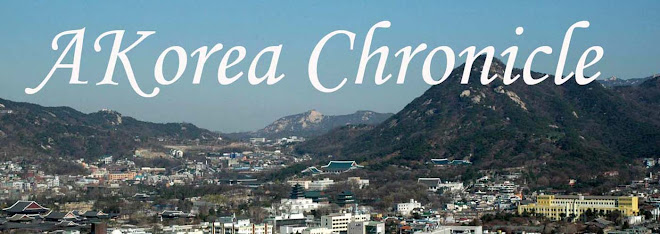In my quest to share info on Korean culture, I am going to share this information about the symbolism of the flag. I think this is interesting. I always thought it was colorful and I understood the yin and yang symbolism but it is interesting to learn about the background. I am sharing this info provided by the Flags of the World website.
http://flagspot.net/flags/kr.html#symb
Symbolism of the flag
The Korean national flag is called Taegukki. The meaning of Korean National Flag is very philosophical. The origin comes from the old oriental philosophy called the theory of Um-Yang, in Chinese pronunciation Yin-Yang. Yin means dark and cold, while Yang means bright and hot. The idea of Yin-Yang is supposed to be originated from the old Korean philosophy of Samshin meaning three gods. A very old book called Chuyok or Iching in Chinese, which was written by (a) Chinese several thousands years ago, claims all objects and events in the world are expressed by the movement of yin and yang. For example, the moon is yin while the sun is yang; the earth is yin and the heaven is yang; a woman is yin and a man is yang; the night is yin and the day is yang; the winter is yin and the summer is yang, etc. Yin and yang are relative. Therefore, A can be yin with respect to B while A can also be yang with respect to C. For instance, the spring is yin w.r.t. the summer and it is at the same time yang w.r.t. the winter. Yin and yang are opposite and struggle each other while they cooperate in harmony. The harmonious state of the movement of yin and yang is called Taeguki, or Taikukkki, Taichi in Chinese, which is also the name of the Korean national flag, i.e. Taegukki. Ki means a flag. (See the similarity between the concept of Yin-Yang-Taichi and the dialectics of thesis-antithesis-synthesis.) The upper half circle, red, of Taeguk means yang and the lower half circle, blue, means yin. They stand for the state of harmony of yin and yang.
The symbols, called Kwae, in the four corners, mean the principle of movement and harmony. Basically, each Kwae consists of three bars that can be either broken or unbroken bars. A broken bar stands for yin while an unbroken bar stands for yang. For example, the upper left Kwae, called Kun, is composed of three solid unbroken bars. And the lower left Kwae, called Yi, is composed of two unbroken bars and one broken bar in between. Since one bar can be either broken or unbroken, i.e. same concept as bit as in the binary computer world, three bars can express 23 = 8 combinations. If you use four bars you can express 24=64 combinations; 10 bars, 210=1024, etc. Therefore the more bars you use the more different situation you can express with Kwae. Among so many states of Kwae, i.e. principle of movement of objects and events, four basic Kwae are used in the Korean National Flag. Those are Kun meaning heaven, Yi meaning fire, Kam meaning water, and Kon meaning earth. Each of them symbolizes a different state of movement.
| ___ | ___ | _ _ | _ _ | ||||
| Kun | ___ | Yi | _ _ | Kam | ___ | Kon | _ _ |
| ___ | ___ | _ _ | _ _ |
The white color of background stands for the peace and the purity of the Korean people who have loved to wear white colored clothes. Therefore, the Korean people have been called the white-clad nation.
To conclude, the symbols, Yin, Yang, Kun, Yi, Kam, and Kon, express the principle of the movement of all objects in the universe and the movement of the universe itself. It also stands for peace and harmony.
Jorge Candeias, 14 October 1997
The white field represents the people's purity and their desire for peace, while the central emblem is the red and blue yin-yang symbol, depicting the concepts of creation and development through duality and balance. Surrounding this are four black KWAE symbols, which are taken from the I CHING and represent the four seasons, the four compass points, the four elements, and the sun, moon, earth, and heaven. They denote the process of yin and yang going through a spiral of change and growth.
Nick Artimovich, 01 November 1996
The Korean flag is called taegukki. Its design symbolizes the principles of the yin and yang in Oriental philosophy. The circle in the center of the flag is divided into two equal parts. The upper red section represents the positive cosmic forces of the yang. Conversely, the lower blue section represents the negative cosmic forces of the yin. The two forces together embody the concepts of continual movement and the balance and harmony that characterize the sphere of infinity. The circle is surrounded by four trigrams, one in each corner. Each trigram symbolizes one of the four universal elements: heaven, earth, fire and water."
Ivan Sache, 29 December 1998
Tae Han Min Kuk !
Cindy


5 comments:
Hi Cindy
Thanks for the background info on the Korean flag.
Becky
you are so good at explaining things. are you sure you don't want to go into teaching? we need good teachers!
sorry, cindy....it is me...judy
It is interesting to learn the meaning of Korean flag. I am a Chinese and I found it more interesting that Chinese culture had such a big influence to Korea.
Beuatiful photos!
Elaine
Post a Comment